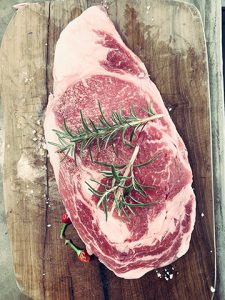 There are a number of different sources of protein that aren’t animal products, yet most people immediately think beef, pork, poultry and fish. You’ll be amazed at how low cost these alternate sources can be and how healthy. While most people get adequate protein in America, a few groups don’t. Seniors are one of those groups. It’s not because they don’t consume it, but primarily because they don’t process it in their body as well. People trying to build muscle tissue also need more protein, so having an alternate source that’s heart healthy is also important.
There are a number of different sources of protein that aren’t animal products, yet most people immediately think beef, pork, poultry and fish. You’ll be amazed at how low cost these alternate sources can be and how healthy. While most people get adequate protein in America, a few groups don’t. Seniors are one of those groups. It’s not because they don’t consume it, but primarily because they don’t process it in their body as well. People trying to build muscle tissue also need more protein, so having an alternate source that’s heart healthy is also important.
There are 20 amino acids, but only nine that the body can’t make.
These are called essential amino acids. They include histidine, isoleucine, phenylalanine, leucine, tryptophan, threonine, methionine, lysine and valine. They’re easy to get from animal products, but not nearly as easy for vegans, since there are few complete proteins in the plant world. Quinoa, pumpkin seeds, buckwheat and soy are complete. That shouldn’t stop you from a meatless Monday or mean vegans are stuck eating those three protein sources daily. You can combine protein to get the perfect blend. Beans and rice and fried rice and peas are two examples.
It’s easier to get protein from meat and poultry, but have plenty of other options.
You need approximately 0.36 to 0.45 grams per pound of body weight, but that also varies. Your activity level, age and goals make a difference in how much protein your body requires. A piece of Parmesan cheese the size of a pair of dice has 8 grams of protein, whereas a chicken breast has up to 65 grams. You’d have to eat 8 servings of Parmesan to get the same amount. How do you get more? Add a cup of green peas to your meal, which also contains eight grams of protein. Use that cheese to make a grilled Parmesan cheese sandwich on high protein bread, such as Ezekiel bread. Eat vegetables like broccoli, spinach, sweet potatoes, asparagus and Brussels sprouts throughout the day for 4-5 grams every one cup serving.
Your snacks can be protein supplements.
Grab some nuts or seeds for a quick snack and boost your protein intake. A handful of almonds contains about 4 grams. Roasted pumpkin seeds are another high protein option that provides a complete protein. They contain about 7 grams of protein per ¼ cup. Eat veggies and hummus dip for even more protein. A cup of Greek yogurt with berries can also bump up your protein intake.
- Lentils are also a good source of protein. Just one cup offers 8.84 grams. Like other sources of protein, lentils provide other nutrients. For instance, they’re a good source of potassium. Add them to soups and salads to increase your protein intake.
- Want a high protein snack that’s great after a workout? Coat a protein bread with nut butter and top with some sliced bananas to provide both protein and carbs that will help with recovery.
- Add some extras to your meals to boost your protein intake. If you scramble eggs or have an omelet, adding five mushrooms will add three grams of protein. Adding broccoli or kale will increase it even more.
- A cold quinoa salad with raw Brussels sprouts, broccoli, onion, avocado, garbanzo beans, tomato or other veggies can be a low calorie healthy option to get both protein and other nutrients.
For more information, contact us today at Next Level Fitness
